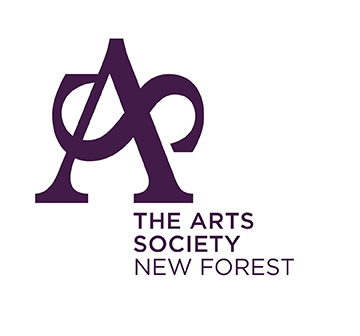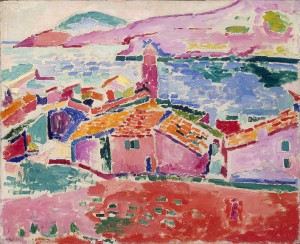Frank Woodgate led a fascinating Study day entitled ‘Understanding Modern Art ‘. His relaxed and knowledgeable style made it easy to follow and stay focussed. In his introduction he made it clear that his aim for the day was that we would better understand art but not necessarily like it any more. However I think that many of us having understood it more, were able to appreciate what the artists were endeavouring to achieve and gain greater pleasure from these works of art.
The following notes are a summary of Frank’s talk – the examples he used are in brackets. Also attached also are the list of all paintings he showed to illustrate his talk and where they can be seen.
Frank’s definition of Modern Art was Art over the last 120 years. Photography had really taken off in the 1890s and artists were trying to depict their subjects differently; evoking emotions and creating atmosphere.
At the beginning of the 20th. century the French and German expressionists were leading the way. The French were using bright, unnatural colours ( Matisse – Les Toits de Collioure )Some of the later German painters were less bright (Schmidt-Rottluff and Munch). They used shape and line to give a message. Picasso began to appear on the scene and he and Matisse became great rivals.
Matisse ‘Les Toits de Collioure’
Cubism began about 1908. The name cubism began as an insult, with a critic describing a Braque painting as ‘just a lot of little cubes’ It was conceptual rather than perceptual – attempting to show all the elements of a person. All art is an abstraction of nature, though Braque and Picasso were never completely abstract – their work usually contained a subject and often words. There was always a respect that they were working in 2 dimensions rather than 3. Some of the paintings began to contain collage; and though not initially admired, by 1915 cubism was accepted.
Futurism followed by breaking down the cubes. War and speed were wonderful subjects for futurism. It is essentially a static artist showing a moving subject, ( Balla –‘Abstract Speed ‘–in which the car has passed ‘ Duchamp’s ‘Nude Descending a Staircase’ ); whilst Cubism is the artist looking all around the subject. Angst is very much an element of this.
Balla ‘Abstract Speed’
Vorticism followed, which was very similar to Futurism. It was very short lived but its aim was to create art that expressed the dynamism of the modern world (Epstein’s –The Rock Drill ).
Call to Order – Artists were trying to forget about the horrors of the war and depict more gentle pictorial scenes. (Paul Nash ‘The Shore’) However, German art at this time reflected the feeling of depression, misery and deprivation – (‘The Night ‘ by Max Beckman.) There was also a reversion to the old styles of painting of the Old Masters. Then amongst some artists there began criticism of the rise of Nazism – (‘Pillars of Society by Grosz 1926)

The Dada Movement, which also appeared about this time, was not so much a style of art, but rather a group of intellectuals who moved to Zurich to be away from the war . The movement was an expression of attitude; basically just trying to offend -( Duchamp’s ‘LHOOQ’)

Surrealism – in 1921 Max Ernst had painted ‘Celebes’, but the surrealist movement did not really begin until 1924. The artists were trying to depict the content of dreams and nightmares – the latent and manifest content of dreams. People were not supposed to understand them –( Magritte’s ‘Reckless Sleeper’ 1928). Miro displayed another type of surrealism – depicting things coming from our unconscious minds-( ‘ The Treason of Images. ‘ 1928/9) Dali used Freudian imagery- as in his ‘Metamorphosis of Narcissus ‘ (1937)
Geometry of Fear – depicting the painful images of the War. ( Fautrier – ‘Large Tragic Head’ )
Art Brut was an attempt by artists to produce art like the art of children or graffiti. It was a short-lived movement which was only admired by the art critics. Most people looked at it and thought that it could have been done by their children. It was influenced by cubism as in Jean Dubuffet’s ‘M. Plume with Creases in His Trousers ‘ (1947)
Abstraction had begun in the 1910s with Kadinsky, Malevich and Mondrian but Gorky developed it in the 40s. It is about creating atmosphere. Abstract art should provoke feeling with a melange of colours and interesting shapes.
Suprematism – Malevich was a co-founder of suprematism, which enabled feelings to be expressed better in abstraction as its not subjective.
Neo-Plasticism was developed by Mondrian, using only Primary colours and horizontal and vertical lines. Rothko’s aim with his work was to create atmosphere.
There was a post war movement called Kitchen Sink – ( Jack Smith’s Mother Bathing Child’, ) It was very depressing and didn’t last long.
Pop Art began in the 1950s ( Hamilton – ‘She’ )It used popular imagery( ‘Marilyn Diptych’ by Andy Warhol). Anything can be art in Pop Art
In Post Modernism any material is ok to use – photographs/signs etc ( ‘Away from the Flock’ by Damien Hirst )and ( ‘My Bed’ by Tracey Emin.) It was a reaction to Abstraction and Impressionism.
Environmental Art was used by Beuys in his – ‘End of the 20th. Century ‘ and Kiefer’s ‘Lilith ‘
Frank finished by showing us works of artists who had won or been nominated for the Turner Prize. He reminded us that the prize is awarded to the artist and not to a particular piece of work
It was a very good study day – absorbing and enlightening, and I hope this brief summary will help to consolidate thoughts for those of us who were there and stimulate further investigation for all members.


